Right Now
Digital Marketing for SaaS Companies: How to Grow Recurring Revenue in SaaS

SaaS companies have their work cut out for them. In theory, the SaaS model is one of the most profitable and scalable types of businesses in the modern world. Assuming you have a good idea and a reasonable profitability basis, there’s nothing stopping you from scaling up a business to the point where your incoming revenue is practically limitless.
However, most SaaS companies rely on large-scale user bases in order to achieve that level of profitability. When you get to the order of thousands of users, your app is stable enough and your reputation is strong enough that retention and acquisition become child’s play. But every business starts with zero customers, and something needs to close the gap.
That “something” is marketing, but not all marketing strategies are equally effective, or equally appropriate for a B2B SaaS brand.
Defining an “effective” SaaS digital marketing strategy
First, it’s important to understand what makes for a successful marketing strategy to begin with. There are many considerations for this, as the process for any given customer to make a purchase and remain a subscriber is fairly complex, and marketing strategies can operate at multiple levels.

(Image Source: Content Marketing Institute)
The chart above neglects the “retention” phase, after purchase, which is another important consideration for SaaS marketing strategies.
Your goal, ultimately, is to earn a customer-related benefit that monetarily outweighs the capital you’ve poured into the strategy. This can happen at multiple levels, including:
- Raising brand awareness.
- Building a brand reputation.
- Attracting visitors to your site.
- Converting visitors to customers.
- Retaining customers for the long-term.
Some strategies target all of these goals, while others specialize on one or two. Marketing strategies also range in cost and in time investment. Ultimately, this guide will consider strategies that accomplish as many of these goals as possible, as consistently as possible, for the least amount of total investment (and therefore, highest ROI).
Key considerations for SaaS companies
There are some special considerations for SaaS digital marketing, however.
- Fast sales cycle. First, most SaaS companies have lightning-fast sales cycles. SaaS subscriptions aren’t necessarily an impulse buy, but they certainly don’t rely on the long back-and-forth exchanges that most B2B operations do. Most rely on immediate conversions, usually with the offer of a free trial (as in the example below). This means SaaS digital marketing needs to have an immediate draw and reach a wide number of users to be effective.
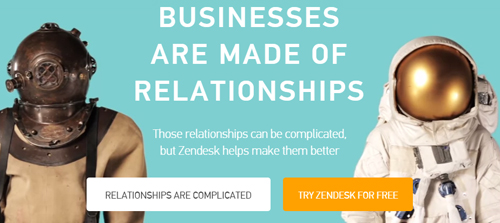
(Image Source: Zendesk)
- Customer retention. Customer acquisition is important, but retention is far more valuable. If your churn rate is too high, even a marketing strategy with a high propensity to generate new traffic and customers will fail. An ideal SaaS marketing strategy reaps the best of both worlds.
- Brand differentiation. There are tons of SaaS companies out there, partially because everyone else has realized what a valuable model SaaS can be. Just take a look at this random sampling of specialized CRM SaaS platforms:
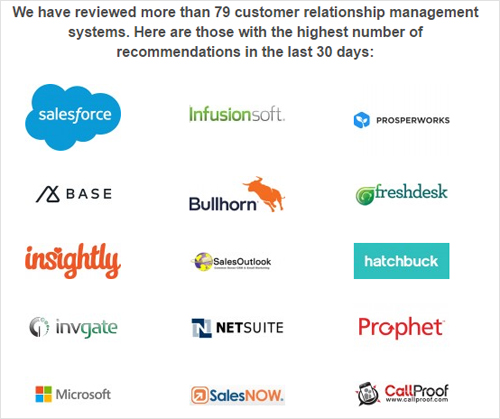
(Image Source: Software Advice)
Your marketing needs to have some mechanism for strongly differentiating your brand.
- Long-term yield. Remember, SaaS is dependent on long-term gains and profitability over the course of years, not months or weeks. There are many marketing strategies that promise fast, short-term returns, but it’s better to invest in a strategy with a similarly long-term payoff.
- The fast scalability of SaaS companies means you need to find strategies that can function feasibly well at multiple stages of your growth. Ideally, you’ll be able to adopt them at launch and grow them with your company to the final stages of your growth.
- Niche specialization. Since there are many niches available for SaaS companies, there are some variations in which marketing strategies are effective for individual companies. However, this guide will focus mostly on strategies that can be useful for any specialized niche.
With these considerations in mind, let’s explore some of the best all-around strategies a SaaS company can adopt.
Content for Digital Marketing for SaaS Firms
I’ve listed content marketing as the first and most effective digital marketing strategy a SaaS company can adopt. It’s difficult to prove this with numbers, since every campaign is different, but for your investment, content marketing is the strategy that offers the best long-term return in the greatest number of different areas. It operates on every level of customer acquisition—from raising brand awareness to converting visitors and even retaining your existing customer base—and it’s relatively cheap, since it doesn’t require much overhead or specialized technology. Best of all, it’s scalable—meaning it’s effective at every stage of your growth—and it’s perfectly positioned for long-term gains. In fact, the return you see on content marketing should increase exponentially as you invest more and more effort into it.
Let’s take a look at some of the individual applications digital marketing can offer. Keep in mind that some pieces of content will be able to fulfill multiple roles in this list.
Inbound-focused content
Inbound-focused content is geared toward getting the greatest number of users to your site. This happens in many contexts, such as building awareness and visibility of your brand, sparking the interest of potential visitors, and clinching the deal by earning an inbound click.
Accordingly, there are some main considerations your inbound content should focus on:
- Standing out from the white noise. Your first job is simply getting noticed. You can maximize your chances here by making your content visible in as many places as possible, and by coming up with truly original content topics.
- Appealing to your target demographics. And your target demographics can’t be “everyone.” Find the target market most likely to buy your product, and gear all your content to them. Otherwise, you’ll attract lots of visitors, but only a fraction of them will be interested in making a purchase.
- Offering some valuable, practical information. This will ensure that your users’ needs are met adequately, possibly driving them to that fast next step of actually converting.
- Suggesting your product as a solution. Your content should be geared, in some way, to a problem that your target market faces. If your product is a solution to that problem, you can bet your content will be effective in driving a portion of your readers to a purchase.
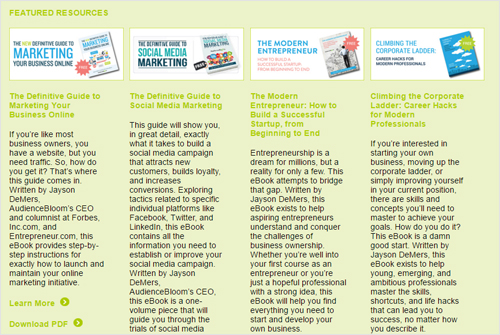
SEO.co is a proud user of inbound-focused content. In fact, you’re reading a piece of it right now! With unique content, focused on providing valuable information and making your readers’ lives easier, you’ll have no trouble attracting more people to your brand. From there, if your solution is valuable enough, the conversion and customer flow will be natural.
Retention-focused content
Content is also effective because of its potential to retain audience members who have already become customers. For this, you’ll have a similar but distinct set of priorities. Since you’ve already gotten these visitors to become active subscribers, you need to give them some kind of recurring value with content that features the following qualities:
- Covering news and presenting new information. If you provide your customers with a stream of updates related to your niche, you’ll accomplish a few key goals in achieving higher retention. First, you’ll give them a value, which will keep them around longer. Second, you’ll showcase your position as a thought leader in the industry.
- Encouraging further use of the software. Any article that implies, subtly or overtly, that users should keep using your software is a bonus. For example, if your company provides time-tracking software, you could cover topics that suggest the efficiency and value of time-tracking software use.
- Showcasing share-worthy stories. You can also aim to spark a combination of customer loyalty and the attraction of new customers by posting share-worthy stories, like case studies of real users or some benevolent act your company has made.
As I mentioned, there can certainly be overlap between these different content functions. I’ve only listed them separately to illustrate the different applications and benefits of content marketing.
Help and support content
As a completely separate section of content, your help and support documents will be imperative to keeping your customers around for a longer period of time. If implemented properly as part of your content marketing strategy, it makes your campaign even more effective by simultaneously giving existing customers the resources they need to continue using your software and showing potential new customers your commitment to user experience and customer service.
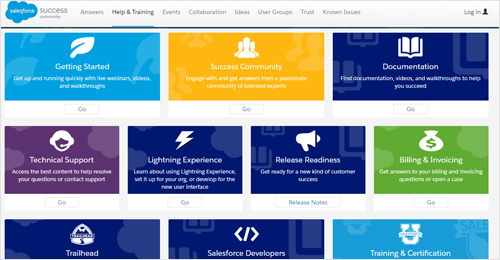
(Image Source: SalesForce)
How you set up your help and support content section is up to you, but the goals are simple:
- Give users exhaustive resources to navigate your software. Leave no stone unturned here; solve as many problems as you can.
- Help users by providing multiple routes to solutions. One article hidden away isn’t good enough; feature search options, forums, and FAQ sections to supplement your work and make it as easy as possible to find a satisfactory answer.
- Make your content visible to both existing and prospective users. This is necessary if you want to build both retention and acquisition.
Every document you produce here is a permanent addition that bolsters both your acquisition and retention rates.
SEO-focused content
I’ll explore SEO a bit more in the next section, but I wanted to mention it in the context of your content marketing strategy, since it’s responsible for a significant chunk of content marketing’s value. If you optimize your onsite content pieces for SEO, with proper protocols for title tags, meta descriptions, headers, body content, etc., you’ll earn greater domain authority, you’ll rank higher for search terms related to your business, and you’ll earn more search traffic as a result.
Overall return
With all these angles, the power of content marketing should be clear. Requiring a minimum investment, lasting forever, and offering a compounding return as you grow your content and digital marketing strategy, your marketing meets all the goals and accounts for nearly all the challenges I mentioned in the introduction. In the long term, it offers the highest ROI of any digital marketing strategy for SaaS companies.
SEO
SEO makes the list for many of the same reasons that content marketing did, and that’s no coincidence; the two strategies are fundamentally related. Digital marketing via content serves as fuel for a SaaS SEO campaign, so with only a handful of additional strategies, you can earn powerful results on both fronts. Like content marketing, SEO is relatively inexpensive to execute, straightforward in its concept, and it offers compounding returns over time.
The main idea here is to increase your domain authority so you achieve higher visibility in search engines. That higher visibility will lead to more search traffic, which will give your site more visitors. And since it mostly relies on digital constructs, these position changes are semi-permanent, and you’ll continue reaping the rewards indefinitely. Let’s take a look at the main points of the strategy.
Onsite optimization
Onsite optimization is all about making sure the main content and structure of your site meets certain thresholds and standards set by search engines. Doing this not only makes sure your site is seen and “indexed” by search engines, but also maximizes your chances of search engines “understanding” what your site is about, correlating it with appropriate keywords and topics.
I’ve written about onsite optimization extensively before, so I won’t dig into the details, but know that with a handful of basic changes and some ongoing upkeep work, you can position your site to rank higher for relevant search terms.
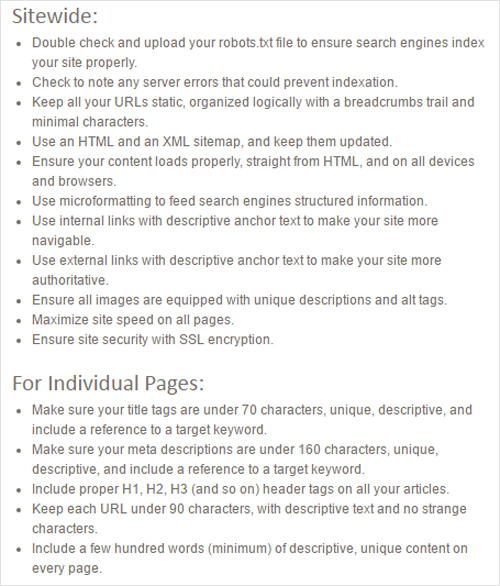
Ongoing onsite content
Google likes to see sites with ongoing streams of content; it shows they care about their users. Not to mention it adds more pages of your site that Google can index, maximizing the spread of your potential search visibility, and it allows you to target specific keywords and keyword phrases that might be relevant to your audience. I already wrote about different goals your content has from a user experience perspective; here, your goals with content are earning prime search ranking opportunities, which could potentially send thousands of visitors per month your way.
Offsite content and link building
The third, and arguably most powerful element of an SEO strategy is offsite content and link building for SaaS businesses. We’ve written about link building strategies and tactics extensively as well, but I want to touch on the value of the strategy as it relates to SaaS companies. The idea here is to guest post content on high-authority external sites. These links serve as third-party indicators that your site is authoritative, and help your site rank higher in searches. And, on a secondary level, they can send direct referral traffic from these high-authority sources to your site. As most of these links are permanent, you’ll reap these benefits continuously for several months (at a minimum) for every new offsite post you publish.
Overall SEO Return
Conciseness prohibits me from exploring the true value of SEO for SaaS companies as a strategy, with all its complexities and variables you may encounter. But on a surface level, the takeaway for SaaS companies is this: with a relatively small investment, you can earn thousands of new visitors per month (and possibly build your reputation in the process, especially with high-authority external sources vouching for you).
Social Media Marketing
Social media marketing is another digital marketing strategy especially valuable for SaaS companies. It’s completely free to establish an organic presence on the vast majority of social media platforms, and there’s no limits or boundaries for the type of communication you can facilitate in the strategy. You can use social media to gain more brand visibility, cement relationships with your existing clients, build your reputation, and even provide support to your current customer base. It’s scalable, focuses on both acquisition and retention, and provides accumulated benefits over time—making it ideal as a SaaS-focused strategy.
Even better, social media marketing exists in a complementary harmony with both SEO and overall digital marketing. As you’ll see (and have seen), these three strategies complement and enhance each other. Separately, they’re incredibly valuable opportunities for acquisition and retention, and together, their effects multiply even further.
Brand awareness
One of the most important factors driven by social media is brand awareness. When you post actively and work to establish your presence in outside areas, you’ll start gradually attracting new followers to your brand. People who have never seen it before will start to become familiar with it at a distance, and the followers you do acquire will learn more about what makes your brand unique.
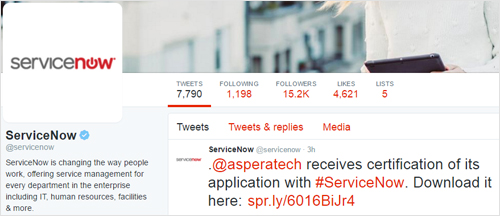
(Image Source: Twitter)
It’s hard to get to 15,000 followers (or more) in a short timeframe, so instead try to focus on incremental goals. Set up an active, consistent posting schedule, then begin an outreach program. You’ll want to participate in conversations related to your area of expertise, work with influencers in your industry to achieve a higher level of visibility, and even engage with targeted individuals who might be a good fit for your brand. You can also use hashtags, contests, and viral content to earn more shares and become visible in alternative ways.
The ultimate goal of visibility is to inch people down the stages of the buying cycle. Awareness gets them closer to a visit, which gets them closer to a conversion. Feel free to engage in tactics that push for these stages—such as calls-to-action that request user signups—but be wary not to overload your campaign with advertising, or your users will begin to distrust you.
Content and SEO benefits
Social media is also valuable as a tool to boost the effectiveness of both your content marketing and SEO strategies. First, let’s take a look at how it makes digital marketing more effective. Your primary goal here is to use social media as an amplification outlet for your work; people won’t naturally stumble across your blog, so whenever you publish a new post, make the announcement on social media. You can also syndicate previous works in the future, maximizing their visibility and possible return. If your work is good, you’ll facilitate more social shares, which will amplify the reach of your content even further.
The SEO benefits of social media marketing function along similar lines, capitalizing on this ability to make content more visible. Social shares of your content function as secondary signals to Google’s algorithm, but the real power here is the propensity for link building. The more high-authority links you have pointing to your domain, the higher your authority will grow, but it’s hard to earn those links naturally. Through social media syndication, you can maximize your chances of a piece of content on your site “going viral,” achieving thousands of shares and possibly millions of newsfeed impressions. In that pool of potential visitors, it’s inevitable that you’ll earn at least a few strong, natural links—as long as your content is link worthy.
Customer service
Many SaaS brands also user social media as a customer service tool, providing a convenient and functional alternative mode of support (and a proactive way to announce service schedules, downtime, and other proactive measures). Some have even created a separate, dedicated account for this purpose.
The advantages of social media customer service are powerful:
- You can be where your customers want to be. Your customers are already on social media, so adding a support channel means extra convenience for them.
- You can address many concerns at once. By posting regular FAQs, helpful articles, facts, announcements, and other information, you can keep your audience in the know and update the majority of your users at once, helping you maximize user retention.
- All your work is publicly visible. This is key, especially with digital marketing as our primary consideration here. Any time you work with a customer on social media to resolve an issue, every other social media user—even non-subscribers—can see it. Positive customer service interactions could be the tipping point in landing a final user decision.
- You can get ahead of potential disasters. Things aren’t always going to go smoothly or perfect, but social media gives you an outlet to get ahead of those disasters by announcing what’s going on, answering user questions, and sometimes, just apologizing.
Though veering slightly from the strict definition of “digital marketing,” customer service is a powerful angle to use in your social media strategy that lends strength to the overall approach.
Community building
SaaS communities are powerful for both client retention and acquisition. When a user feels as though he “belongs” with your brand, he’ll never want to stop subscribing—giving him a sense of community facilitates the development of those feelings of belonging. An outside user looking in will see the comfort and advantages of the community (and at later stages, its sheer size), and may be persuaded to subscribe on that basis alone.
You’ll see this as a common tactic in many SaaS companies, some of whom have created onsite forums and engagement platforms to encourage intra-community discussion.
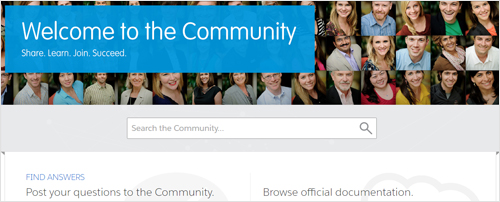
(Image Source: SalesForce)
Still, the best way to develop a thriving community is through social media. Make people feel like they belong to your brand by engaging them one-on-one; respond to their comments, ask them questions, and personally thank them for their contributions. They’ll remember you, and other users will see your interactions. Over time, you’ll recruit more and more followers, all of whom can converse with each other as much as they converse with you, and your community will start to take shape.
Overall return
In the early stages, much like content marketing and SEO, you’ll be hard-pressed to turn a meaningful profit. However, if you remain consistent and focused in your strategy, there’s no reason why you can’t cultivate a community of thousands to engage with your brand. The enhancement benefits to your content and SEO strategies alone make social media worth the effort—but add in the customer service angle and the community building power, and you’ll calculate that even a few hours of work per day can be enough to earn you thousands of new visitors per month (and strengthened relationships with your existing subscriber base).
Paid Advertising
Paid advertising is a popular online marketing channel, so I wanted to address it and its possible advantages for SaaS companies. In paid advertising, you’ll select a medium (usually something like Google or Facebook, with prominent visibility and targeting options), they’ll post an ad, and you’ll pay a fixed price for every click you receive.
This is a cool strategy, and one that can earn you a decent ROI, but there are a handful of disadvantages for SaaS companies that make it less than ideal as a long-term marketing solution:
Competition.
Most other SaaS companies are already doing this. Try to get involved, and you’ll have a hard time standing out in the crowd.
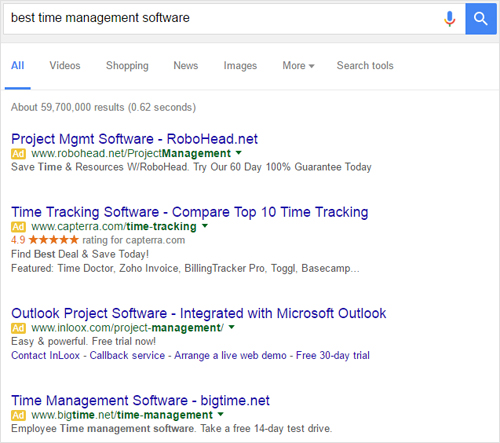
(Image Source: Google)
- Cost. Thanks in part to competition and in part to rising overall PPC costs, you’ll end up paying a hefty monthly fee to support your advertising.
- Linear growth. No matter how much you scale, your investment will always return the same amount; you aren’t investing in long-term growth with PPC the way you can with the aforementioned strategies, because as soon as you stop paying, the ads are taken down.
For these reasons, I don’t recommend paid advertising as a long-term marketing strategy in SaaS. However, it does have some powerful advantages at the start of a SaaS company’s growth, including giving you the ability to target a specific audience and ensuring a positive ROI early on in your campaign. It’s definitely worth considering as a short-term addition to your growth strategy.
Marketing Challenges for SaaS Companies
Software-as-a-Service (SaaS) is one of the most potentially profitable niches around today, sought after due to its inherent scalability as well as its relative ease of approach. With a good idea, solid execution, and enough time, theoretically any SaaS product can keep you profitable for the long term.
However, there’s a specific threshold for SaaS that needs to be achieved before you can start raking in the profits; you need enough paying customers to compensate for your initial costs, and a sustainability model that will keep you productive for years to come. In short, SaaS marketing can take time. Most of your job here boils down to effective marketing, but SaaS companies face unique challenges that companies in other niches don’t have to worry about (or at least not as much).
Pros and Cons
What’s ironic is that the handful of factors that make SaaS such a lucrative space for startups are the same factors that make these types of companies difficult to market. Take a look at the average SaaS company’s annual growth over the past decade:
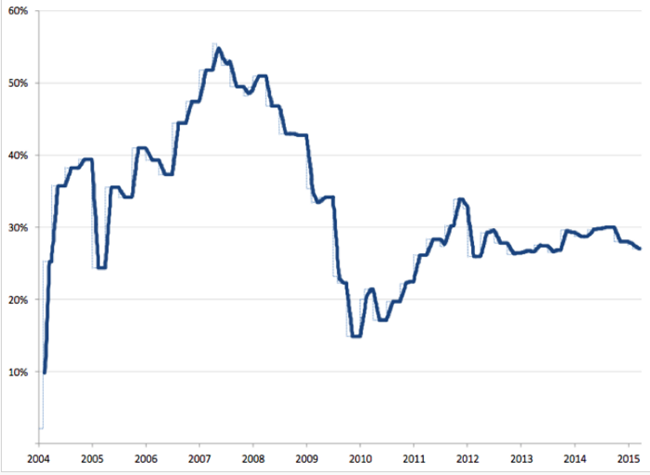
(Image Source: TechCrunch)
Why is this growth rate so high?
- SaaS companies have the capacity to skyrocket in growth, since they can acquire more customers while investing the same flat amount. The flip side to this is that your marketing strategy needs to scale to sustain this growth, and starting the momentum is incredibly difficult.
- Short sales cycle. You don’t need a long series of interactions to make a sale, making transactions faster. But at the same time, it’s easy for customers to find reasons to leave.
- Ease of entry. Since SaaS is still a relatively new field (with new technologies developing all the time), it’s not hard to enter the market. Of course, everyone realizes this, and accordingly, the market is flooded.
- Dependence on long-term revenues. The lifetime value of a customer is what’s truly important here, but customer acquisition and retention are two very different strategies.
The Challenges
Throughout this guide, I’ll be introducing and explaining some of the biggest marketing challenges SaaS brands face. These are:
- With so many SaaS brands in circulation, how can you get noticed?
- How do you convince a new customer that your service is worth the price?
- You’re selling a service, not a product, so how personal and approachable is your brand?
- Retention is the key to profitability, so how do you keep your current customers happy?
- How do you build a scalable marketing strategy from scratch?
Feel free to explore each of them in turn, or skip to one you feel particularly challenged by in your own competitive environment.
Differentiation
Differentiation is about making yourself stand out from the oversaturated SaaS market. Consumers have dozens of options in virtually every available niche, from saving time to organizing online files. There’s a chance you’re emerging in a novel market, one that’s never been tested before, but even so, eventually you’ll face the rise of new competition, and you’ll have to defend yourself.
This is the first marketing challenge because it’s usually the first hurdle you’ll face when launching a campaign: how do you get yourself noticed?
Branding
Your first job is to create a brand that stands out. Don’t rely on the same clichés and discourse that your competitors have, or you’ll blend in. Every SaaS brand likes to define itself as an “innovator” or as “committed to customer service.” Repeating these values is going to make you seem like a self-parody, so dig deep here—what really makes your brand stand out?
There are a few different ways to do this, but first you need to decide on your brand standards. That means a lot more than just deciding what your logo looks like or what colors you’ll use throughout the app. What’s your brand’s personality like (and we’ll dig a bit deeper into this later)? What characteristics do you exhibit? What emotions do you wish to evoke? Get creative here, and bear your target demographics in mind.
From there, it’s a matter of expressing these differentiated brand factors in your marketing and advertising materials. Take a look at how Workday does this in their storytelling ad, which shows the stories of people using Workday:
By the end of this video, you get a clear sense of not only the Workday product, but the company’s values and ideals. It makes them stand out in a crowded market.
One-Upping the Competition
An alternative route to differentiation is a simpler one that requires less creativity. Instead of trying to create an identity that’s distinguished from your competitors, you’ll find some specific quality in your competitors and work to outdo it in your own work.
For example, let’s say you offer a service very similar to your competitors, but you can offer it for $5 less per month. Or let’s say you can offer a similar service for the same price, but with a dedicated account representative for any business who signs up.
These are powerful differentiating factors that might make the difference between someone choosing you or your competitor. Your job should be to emphasize these qualities as much as possible in your marketing strategy. For example, you might include comparison ads that compare your service to the next leading competitor, with the prices highlighted at the bottom. Or you might create a new tagline that emphasizes your commitment to service through dedicated account managers. This is your way to stand out, so use it whenever you get the chance, and if you have multiple differentiating factors that one-up your competitors, even better.
Target Demographics
Let’s assume that you have a strong brand, but you’re finding it difficult to distinguish yourself from your competitors. It happens. Fortunately, there’s more than one path to differentiation. This one may require a slight adjustment to your product in general, but it could open you up to much more lucrative opportunities.
Think of your target demographics. Yes, you have a product similar to those of your competitors, but does that mean you have to share the same audience as those competitors? Absolutely not. If you do your research, you’ll find that there are probably at least a handful of niche demographics who might be interested in your product—if you position it correctly.
Consider how note-taking app Clear markets itself to students (and young people in general). Evernote is a dominant SaaS player in the world of note-taking apps, but Clear has carved a path for itself by marketing to a different demographic altogether.
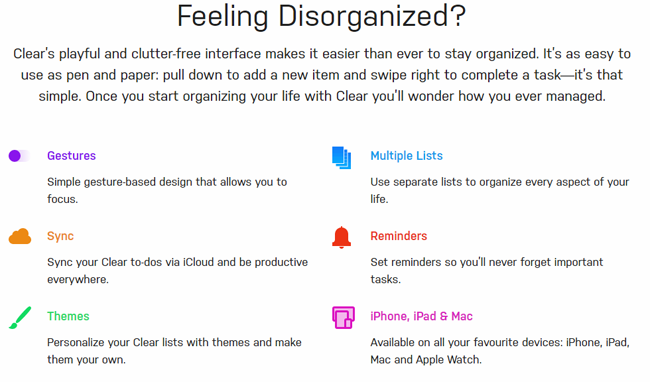
(Image Source: Clear)
I don’t have the space to get into the specifics of how to choose images, words, and subjects that resonate with your target audience of choice, but know that if you angle your brand and content properly, your messages will resound with your chosen target audience.
Thought Leadership
The final path to differentiation I’ll mention is “thought leadership,” which is kind of a broad subject. The idea here is to turn yourself into a leading authority in your space. Start publishing valuable content, making bold claims about the future of the industry and offering insights that no one else can offer. Get yourself published on all the leading publications in your industry, and start showcasing the personal brands that comprise your leadership.
As you build your authority this way, you’ll gain a reputation for being a novel thinker, and customers will start recognizing your brand as one that truly stands out. The only downside to this approach is that it takes a while to build this momentum; you can’t just flip on a switch and expect to be taken seriously as a thought leader. But in the meantime, you’ll earn tons of new traffic and higher customer loyalty.
Value
Standing out will get you in front of more people, but that won’t necessarily make those people convert to paying customers. Though most consumer decisions are driven by a blend of both emotion and logic, most SaaS purchases end up on the logical side of the spectrum. There are several reasons for this. For example, since SaaS products aren’t tangible, they don’t give consumers the semi-“high” feeling of acquisition. Since they’re usually a subscription rate, they aren’t associated with an instant gratification feeling. And of course, most of them are B2B-oriented, so they require some kind of bottom line benefit to be purchasable.
It’s hard to pin down an objective value to an intangible service like this, so your job as SaaS marketers is to calculate and emphasize this value as much as possible.
Measurable Factors
Your best bet is with measurable factors. Anytime you can assign numbers to your abstract ideas, you’ll instantly forge a route to a logical decision. For example, if you’re selling software that purportedly increases productivity for $30 a month, imagine the difference between billing it as a way to “increase productivity” versus a way to “save 15 hours a month.” The latter gives potential customers something to grasp onto; some quick math lets them realize that they’re basically paying $2 per hour of “saved time,” at least according to your research.
There’s no shortage of companies who leverage this tactic, including some of the biggest names in the industry:
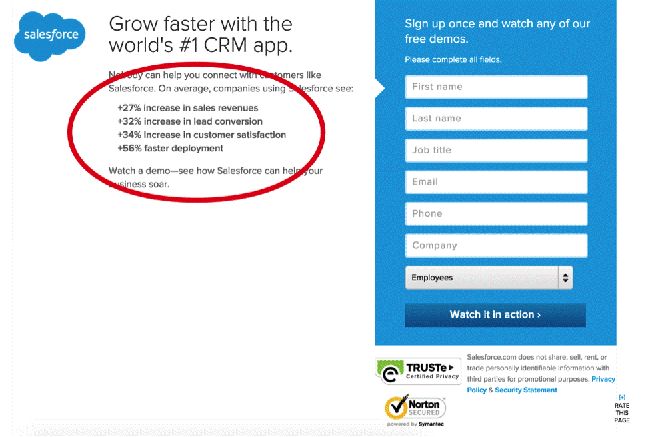
(Image Source: KissMetrics)
Once you have the numbers, it’s easy to propagate them throughout your campaign, but how do you get those numbers in the first place? This is the key challenge. Once your company has grown large enough to start collecting this data accurately over wide scales, you won’t be as desperate for the information. On the other hand, when you really need it, you won’t have the customer base or resources to gather it accurately.
Until you have real data about how people are using your app, you’ll have to resort to third-party metrics. For example, instead of citing the fact that the average user saves “15 hours a month,” you could cite a general statistic that the average American worker loses “60 hours a month” in overall productivity. These numbers won’t provide users a one-to-one valuation of your app, but will get them thinking about the concrete value associated with your app’s area of expertise.
Immeasurable Factors
Of course, there are also immeasurable factors associated with the value of your product, and you’d do well to emphasize these, too. For example, how can you quantify the value of a quality customer service experience? How can you quantify a customer’s sense of security when backing up their data to your cloud? The short answer is, you can’t, but you can still emphasize these immeasurable, intangible factors in your marketing campaign.
One of the best ways to do this is through storytelling; instead of flashing a number in front of a prospective customer, guide them in a narrative that illustrates who your brand is and what your product does. Take a look at how Concur does this with customer testimonials:
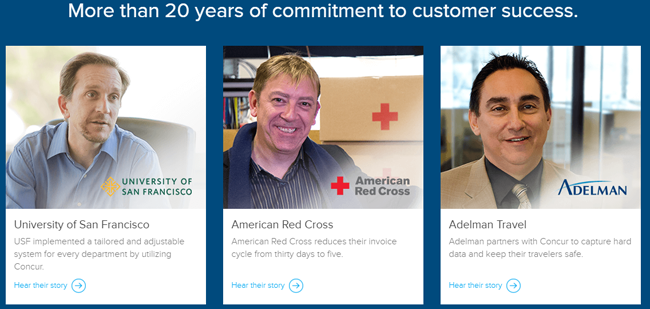
(Image Source: Concur)
As a general rule, the subtler your approach is here, the better. There’s a big difference between saying outright, “we’re really good at making our customers happy,” and simply telling a story about a time your company went above and beyond to make sure a customer got the level of service they deserved. Let your prospective customers draw their own conclusions and assign their own values here.
Approachability
Many entrepreneurs are drawn to SaaS models because they don’t require much in the way of human resources. The app itself will do most of the work, so all you need is a development team, some marketing creatives, and a handful of customer service reps to step in when your resources and technical documents aren’t enough to help prospective customers through their issues. The process is driven almost exclusively by technology.
There’s a critical problem with this in your marketing campaign; people far prefer personal, human experiences to cold, corporate, technological ones. If you want to be successful as a SaaS marketer, you need to find a way to humanize your brand and make yourself approachable to a wider portion of the population. As you might imagine, there are several ways to do this, but they all revolve around making people feel comfortable with your brand.
Brand Voice
The first path to approachability hearkens back to your branding, which I’ve already covered to some degree in the section on “differentiation.” But what’s most important here is the tone of voice you use to communicate with your customers—it can make the difference between a customer wanting to engage with you, and a prospect never giving you a second look.
Obviously, you want to make sure your brand voice is different from those of competing companies (and SaaS brands in general). However, there are a few critical qualities that constitute an effective, approachable brand voice:
- Show that you aren’t a robot. Inject a bit of your own personality into your brand’s messages, and give people the sense that there’s a real person here. It instantly makes your brand more familiar, and gives people the sense of a personal experience.
- Humor and laughter are powerful human experiences, capable of creating strong bonds and tearing down pretensions at the same time. You’ll want to be careful with your use of humor (because it’s easy to cross a line), but don’t be afraid to make jokes and tongue-in-cheek references liberally.
- Don’t inject your writing with buzzwords and corporate lingo, and try not to use too complex a vocabulary for your audience. It’s far better if you remain informal and casual, turning your brand voice into something much more conversational and approachable.
- Don’t be afraid to make fun of yourself a little bit. Brands that take themselves too seriously come off as alienating. Remember, you want people to relate to you.
Take a look at how MailChimp skillfully handles a mispronunciation of their brand name with a humble, humorous response:
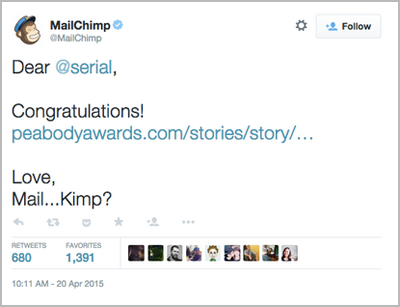
(Image Source: BOSContent)
Customer Service
Your commitment to customer service is also going to help you seem more approachable. After reading this, you may be thinking, “customer service? I thought this was about marketing.” It is. But there are three ways to make your customer service strategy double as a marketing opportunity:
- Use social media as a customer service outlet. Most SaaS companies have some kind of social media outlet for their customer service wing—usually a dedicated account indicated as “support.” Receive customer questions, complaints, and comments here, and you’ll get the opportunity to publicly address them, showing off your customer service skills.
- Develop a help/FAQ section of your website. This should be a branch of your overall content strategy. Provide detailed tutorials, FAQ, and help guides for your customers—you might even include a customer forum for existing subscribers to exchange information. This will not only help your current customers, it will also look good to prospective subscribers doing background research on your brand.
- Publicize case studies and testimonials of excellent customer service. If you have a good story to tell, tell it! The extra visibility will make you seem warmer and more welcoming as a brand.
The bottom line for each of these approaches is giving your customers the best possible service, and making sure both your current and prospective customers are around to see it. This will increase people’s perceptions of your brand’s customer commitment, and will make them feel more comfortable approaching you in general.
Feedback
It’s imperative to listen to (and accept) feedback as a SaaS provider. Again, this isn’t a marketing strategy per say, but it can be leveraged as a marketing opportunity. For example, whenever you take a customer suggestion and implement it, post a press release about it and make it very obvious that you’re doing this to improve based on customer expectations.
You can also publicize your openness toward feedback with a move like this one from Inbound:
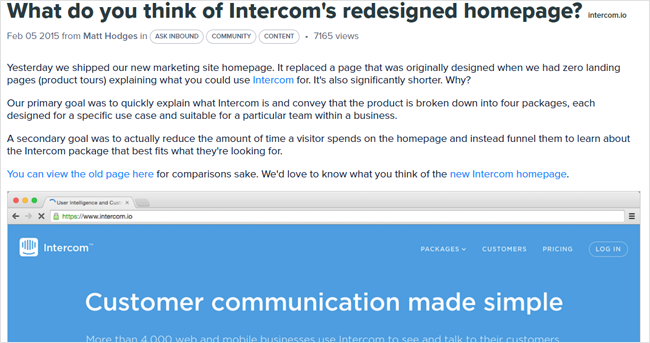
(Image Source: Inbound)
When people know you’re not only willing, but eager, to hear and respond to customer feedback, they’ll see you as a more down-to-earth, friendlier company.
Retention
The biggest reason for SaaS company failure isn’t an inability to differentiate, or a lack of approachability, and it’s usually not even an inability to attract new customers—it’s an inability to keep customers around. Customer churn, the departure of previously subscribing customers, is the single biggest reason why customers leave.
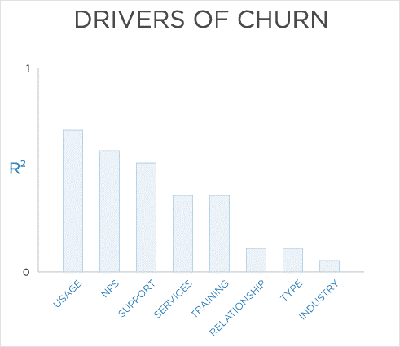
(Image Source: BlueNose)
As you can see, usage is the biggest factor for customer churn. This is partially dependent on the quality and effectiveness of your app, but it also depends on getting your customers to use the app regularly, keep your brand top-of-mind, and think more favorably of your app in general. Through marketing, you can keep your customers more interested and more engaged in your brand, retaining them as paying subscribers for the longest possible time.
Encouraging Repeat Usage
One of your primary goals is encouraging users to use your product regularly. Get them to use it every day for a period of a few weeks, and they’ll likely be hooked. The best way to achieve this regular usage is through some kind of loyalty program. For example, you might give customers some reward for logging in regularly, or you might offer a once-daily piece of information or value that naturally encourages people to check in often.
You can also use email marketing to send people reminders, or social media to keep your app top-of-mind enough to encourage users to keep coming back. Regular tips, tricks, and “hacks” of your product can make long-time customers see your app in a new light, and think of your app as always evolving and offering something new.
Content Marketing
Your SaaS brand needs a content marketing strategy, plain and simple. It doubles as a customer acquisition strategy and a customer retention strategy; through SEO, social syndication, and offsite presence, you’ll get a decent stream of traffic, but what we’re really interested in here is keeping customers around.
If you give users new information, helpful tips, new opinions, and ideas that help them in their own businesses, they’ll think more highly of your brand, and will be more likely to stick with you for the long haul. HubSpot has one of the best content marketing strategies out there, and you can bet it’s helped them preserve their ridiculous customer retention rate:
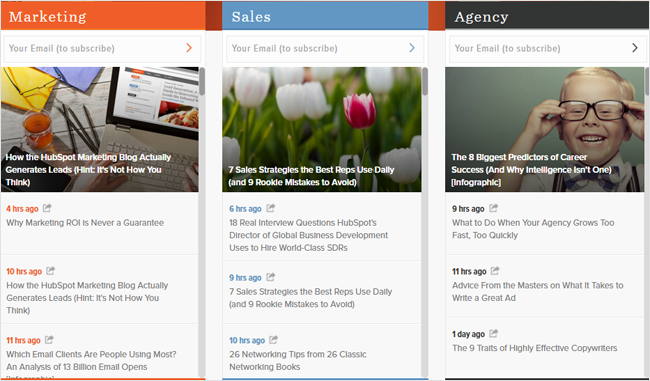
(Image Source: Hubspot)
It also pays to have some kind of exclusive content, available only to your paying subscribers. This might include a webinar series, a free eBook (or several), or any other high-profile content that only your subscribers will receive. If you publicize it, this will do three things for your brand:
- Encourage new subscribers to join. An exclusive content feed might be the factor that puts them over the edge.
- Keep your brand top-of-mind. Sending out regular emails will remind them your brand still exists and is relevant.
- Give your users a reason to stay. If a customer considers leaving you, the decision will be much harder if they’re also giving up that content.
It’s all about giving your customers value and showing them their importance.
Transparency and Proactivity
Things aren’t always going to go well. Your software will have outages, it will break, and it will have flaws you don’t realize until customers are already experiencing them. If you try to sweep these problems under the rug, or ignore them entirely, your users are going to become resentful.
It’s far better to be transparent and proactive in these situations, and many major SaaS brands have learned this lesson. Take Buffer, for instance, which has implemented a policy of transparency in many areas of its business:
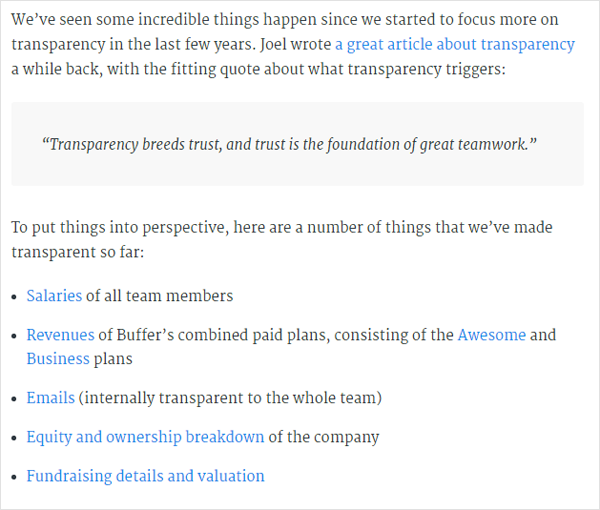
(Image Source: Buffer)
Transparency shows that you’re willing to admit you’re not perfect, and gives customers the sense that they know the “whole story” with your products. If they feel like they’re being kept in the dark, they’ll feel distrustful of you, or taken advantage of, and they’ll be more liable to leave.
Similarly, proactivity helps you get ahead of the mistakes before they start negatively affecting you. Think of it this way: assume someone has hit your mailbox with their car. Which first impression would make you angrier—a man at your door owning up to the mistake, or your demolished mailbox with no driver in sight? Get in front of your mistakes and slip-ups whenever you can. Your customers will be grateful.
Ongoing Improvements
Technology changes quickly, and customers are demanding. They expect to have the best at any given time, and that means you have to adapt consistently and frequently if you want to keep up with their expectations. Any improvements—from new features and functions to simple design tweaks—will likely be lauded by your current user base. True, some of these features may be rejected, but you’ll still get credit for trying something new. Take a look at Facebook as an example—they post new updates all the time, some of which are angrily rejected and taken down, but users are still loyal because the app isn’t afraid to adapt with the times.
Momentum
Last but not least, there’s the problem of momentum. When you first build and launch your SaaS product, your biggest hurdle is going to be building a marketing pace that can scale as quickly as you need. Once you hit a certain threshold of visibility and reputation, it will be easier to keep your strategies running strong—you’ll have more user data, more experience, and a stronger foundation to work with. Hitting that threshold is the tricky part.
Starting with nothing
When you begin, you’ll have almost nothing to work with—no users, no reputation, no data. Since users, reputation, and data are the critical points you need to build a working marketing strategy, this poses a massive problem.
There are three steps to addressing this:
- Leverage data that already exists. You don’t have much data on your users, but chances are, someone else does—and they’ve probably published it! Exhaust your resources to research and learn more about your key demographics however you can.
- Commit, and stay consistent. There’s always room for adjustment, but don’t bank on changing up your brand every few weeks. Once you decide on a strategy and approach, stick with it—you’ll need the consistency factor if you want to grow.
- Look for visibility opportunities. Early on, you’ll need footholds on which you can stake your brand and spark some early growth momentum. The simplest of these is using your own connections to start building a social following, but you can also work with influencers, get published on high-profile sources, or pursue a sponsorship opportunity that will get you ample visibility early on in the process.
Scaling the strategy
No matter what type of SaaS company you have, you need to scale if you want to survive.
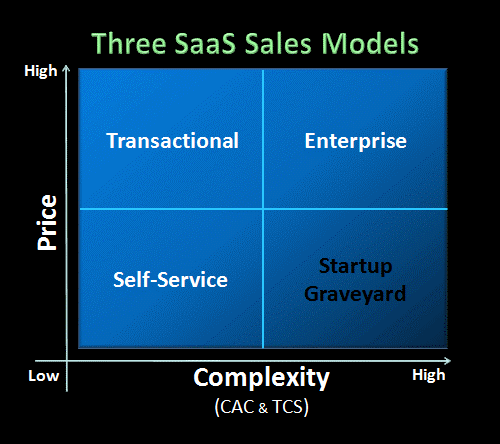
(Image Source: Chaotic Flow)
Unfortunately, scaling isn’t as simple as flipping a switch, and it isn’t going to happen on its own. Here are the main ways you can do it:
- Seek wider audiences. Pursuing new publication channels and social media platforms will give you access to new verticals and new segments of your audience that were previously unreachable.
- Engage with better publishers and influencers. As you build a better reputation, you’ll have access to more prominent publishers and influencers, who can help you broadcast your voice to even more prospective customers.
- Increase the quality and quantity of your content. I’ve already addressed how content is a powerful tool for both customer acquisition and retention; by increasing both the quantity and quality of your work, it will help you see even better results.
- Leverage the power of your current audience. Let your audience do the work for you! Implement referral programs, host competitions, and get your customers actively talking about your brand.
With consistent effort and a motivation to grow, there should be nothing stopping you from achieving the levels of visibility and reputation that you want to achieve for your business.
Tips for Perfecting Your SaaS Brand
SaaS (Software as a Service) providers are a unique business niche; no matter what function your product serves, or what your target audience is, certain characteristics of your infrastructure are a given:
- Your core product is a piece of software that either makes a task easier or provides new information.
- You make money through a monthly/yearly subscription.
- Your software is centrally hosted, accessible via the cloud.
- Your software features multitenancy, and you have a high potential to scale.
Beyond that, SaaS providers cover tons of different areas—accounting, marketing, customer management, project coordination, and antivirus programs are just a handful of examples. Still, most SaaS face similar challenges when it comes to branding and identity (which I’ll cover a bit later in my “Key Challenges” section). Overcoming these obstacles is necessary if you want to successfully market your SaaS business, as branding is at the core of any marketing campaign. Think about it—how could you possibly communicate to your customers effectively, if you don’t know what makes your company unique?
This feature is designed to guide you through the most important components of SaaS brand identity, identify the key challenges you face over your development, lend you exercises with which to hone your brand, and introduce some key areas for practical application. Regardless of whether you’re building a brand from scratch or redefining yours in an effort to reconnect with your customers, I hope this guide will serve you well.
Core Components of Brand Identity
First, I want to explore each of the “core components” of brand identity, and how SaaS providers can maximize the value of their approach in each area. In each section, I’ll introduce the nature of the component, provide some examples of SaaS companies who have succeeded in those areas, and note key considerations you’ll have to bear in mind when determining that key area for your business.
Keep in mind that one of the most important factors for brand success is differentiation; you shouldn’t copy the brand strategy of any existing SaaS company, nor should you rigorously adhere to my “rules for success.” Instead, use these as inspiration and rough guidelines, respectively, to fuel your own creative process.
Mission
First up is your company’s mission. This is often characterized as a “mission statement,” but it’s not imperative that you be that formal or concise. In fact, you can have a lengthy, multifaceted mission—as long as it’s relevant to your audience.
What is a mission, exactly? It’s what your company intends to accomplish in the SaaS world. Don’t think of it as what you see yourself being in a few years—that’s going to come later as the “vision” component of your brand—this of it as the present. Who are you, right now? What are you striving for?
The simple answer to this is “we help our customers _____,” and this isn’t a wrong or bad approach, but it’s one that almost every SaaS company latches onto. If you want to be successful, you have to differentiate yourself. People gravitate toward SaaS companies that offer something unique.
Take a look at how Concur demonstrates its mission—it isn’t in a formalized “mission statement” on an About page—it makes itself evident in a company description:
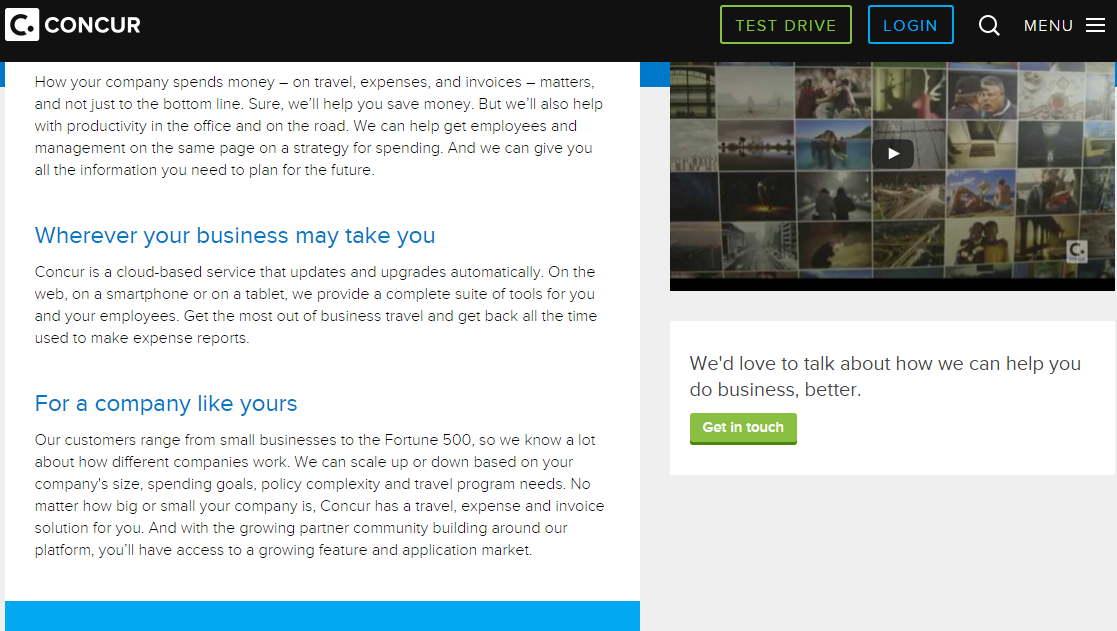
(Image Source: Concur)
What key traits do you take away here? Saving money is important, as is improving productivity, but Concur also pushes their high level of flexibility. Their mission is one of adaptation and all-around service. Imagine the difference: what if this page only talked about how Concur saves you money? Chances are you’d be far less compelled to learn more about the company or the product.
SaaS companies are all about making customers’ lives easier, so your mission statement should reflect that—just not in an ambiguous way. This is your chance to prove what you’re all about.
Vision
Many people confuse a company’s mission and vision—and on the surface, they sound the same. However, a mission refers to a company’s current disposition and structure, where a vision refers to a company’s view of the future. This is an opportunity not only to show users how you operate and what your goals are, but also what they can expect from you in the future.
Because SaaS companies offer subscription rates, usually over the course of the long-term, people want to find a provider they can stick with for many years. Because SaaS relies on technology, people want a provider that’s willing to adapt and innovate over those years. Accordingly, your vision statement needs to include some degree of accelerated growth, innovation, or futurism.
Take a look at what SalesForce does here:
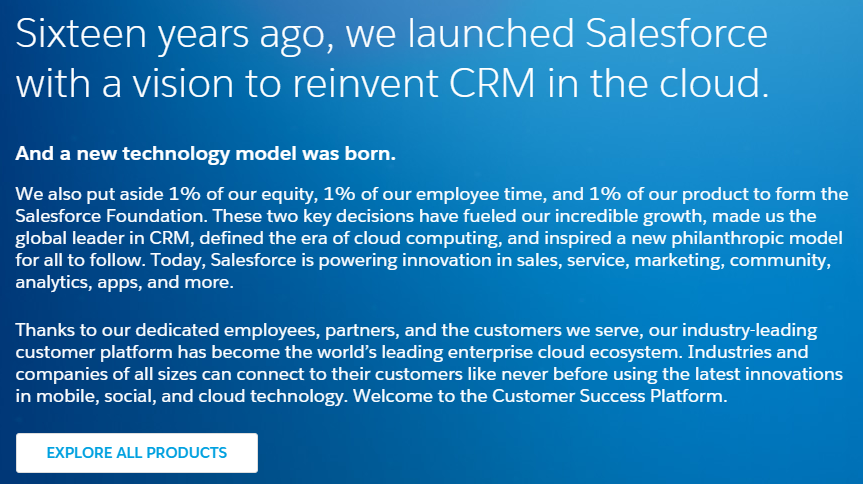
(Image Source: SalesForce)
This is kind of a retroactive vision statement, but it’s a great example of conciseness: “reinventing CRM in the cloud.” Imagine the difference: what if, instead of revolutionizing their niche, SalesForce’s vision was something vanilla like “making CRM easier well into the future.” It’s certainly not as exciting, is it?
Again, don’t just carbon-copy this by making your brand’s vision “reinventing ____” or “improving ____.” Dig deep and find out where you really want to be in five years, and communicate that in the most concise way you can.
Values
Your company values tell customers what your company really cares about, and they can range from customer service values to real-world social responsibility values.
What do people want to see in a SaaS provider? Anything in line with the service’s function that doesn’t boil down to raw profitability. For example, if your values only center on making money and keeping your product in good working order, people won’t exactly line up to start subscribing. Instead, find a selection of values, perspectives, and opinions that characterize your brand, and put them to good use in practical applications.
Take a look at the following examples from AthenaHealth:
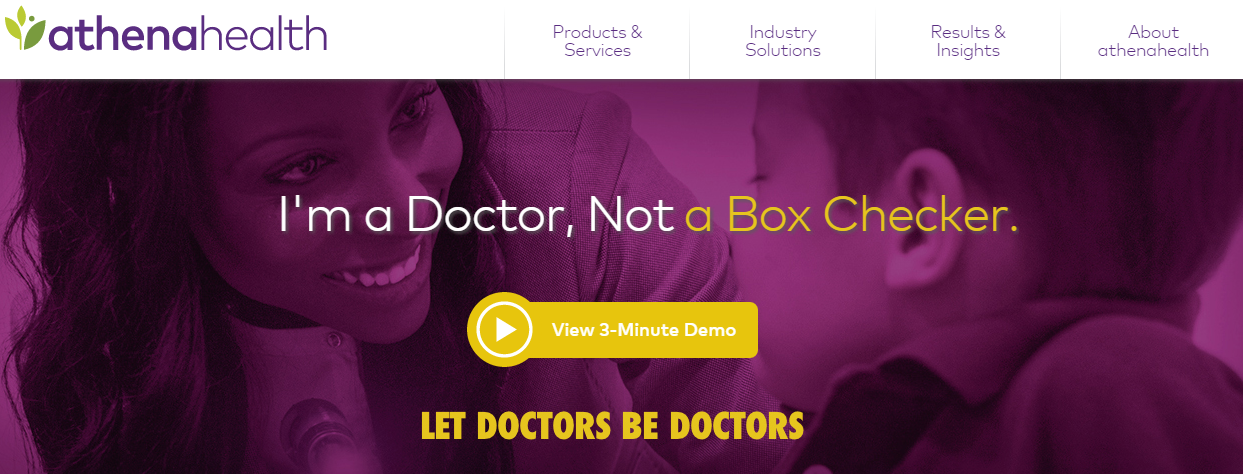
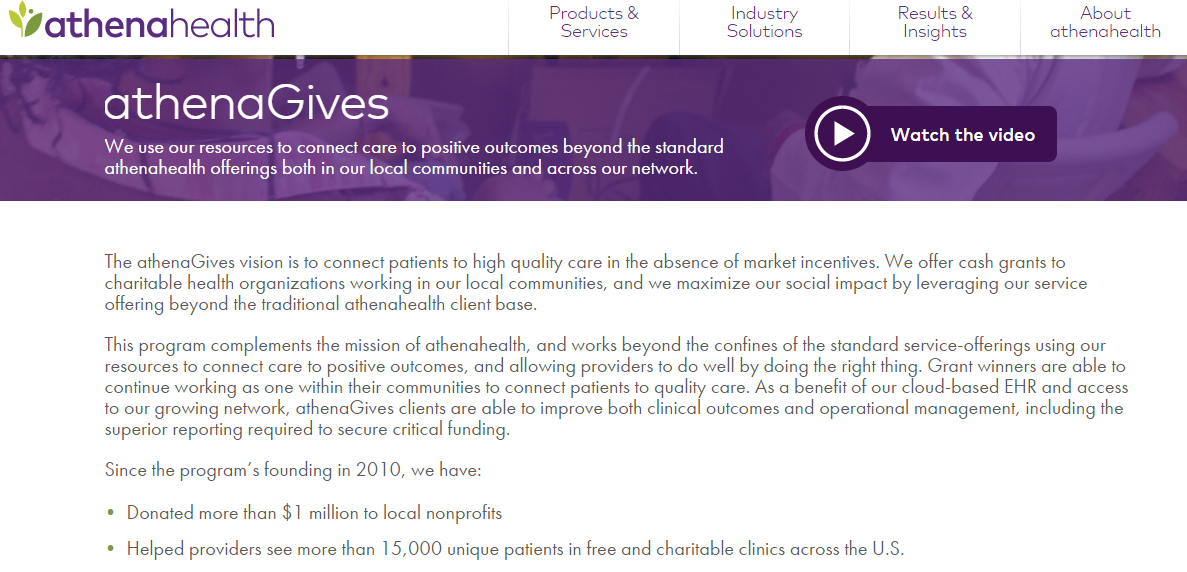
(Image Source: AthenaHealth)
AthenaHealth’s home page makes their values clear: improving the healthcare industry. The cycling banner with the tagline “let doctors be doctors” is a clue that the service wants to give doctors a better chance to utilize their all-important skillsets. The company backs that up on another page, demonstrating their participation in the AthenaGives project, where they volunteer and make charitable donations to improve healthcare support in local communities. Imagine the difference: you could easily imagine a company like AthenaHealth positioning themselves to save doctors money, or make healthcare more profitable, but think of the bad impression that might leave users with.
You don’t have to donate to charity to exhibit strong values, but you do have to show that your company truly cares about people, one way or another. You’re asking people to engage with a digital brand for digital goods, so a humanization element is vital if you want to build trust.
Unique Value Proposition
There are hundreds of SaaS companies out there, many of which overlap in terms of service provision. What makes yours special? What makes yours worth the money? The combination of your answers should lead you to your “unique value proposition.”
In the SaaS sphere, this is incredibly important. People don’t need SaaS technology like they need food or water, and they can easily shop around to find and analyze your competitors. If you want people to gravitate toward your brand, you need to strongly display the factors that make you worth the money and unlike anyone else on the market.
This can be tough, but take a look at ServiceNow as an example:
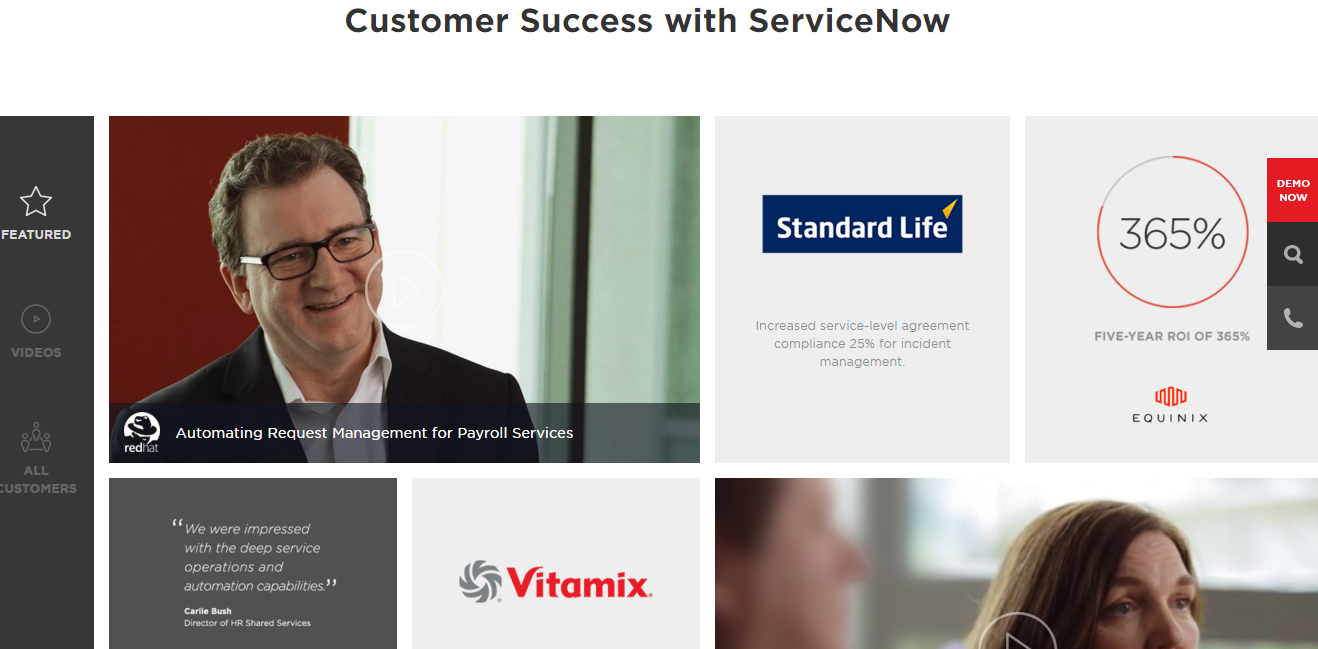
(Image Source: ServiceNow)
This page continues to scroll. Rather than trying to give you a bulleted list of advantages, ServiceNow offers a blend of customer reviews, testimonials, statistics, and case studies to demonstrate why its platform is uniquely valuable. Here, this boils down to a high ROI and service with a personal touch—somewhat general value propositions, but very effectively demonstrated. Imagine the difference: what if, instead of this page, ServiceNow simply had a list of software features with a price tag at the end?
Specificity is your best friend here. Don’t just say “we offer a high ROI,” give a percentage figure. Don’t say “we have great customer service,” display a quote from a real customer who could agree with this statement.
Personality
SaaS is, by nature, an alienating, digital business. For the most part, you buy it, use it, learn it, and get help with it exclusively online without any help from an individual. People crave a human, personal experience, so the only way to bridge this gap is to inject your brand with more personality.
What that personality is depends on your angle, your niche, and of course, your key demographics; a young startup entrepreneur won’t respond to the same personality traits that a middle-aged business owner might.
Of course, how you position yourself is entirely up to you. You might go for a more experienced, professional, classy voice, or a more casual, energetic, humorous voice. Whatever you choose, keep it consistent across all your pages and marketing channels.
Slack provides a great example of a company with a light, humorous, casual tone:
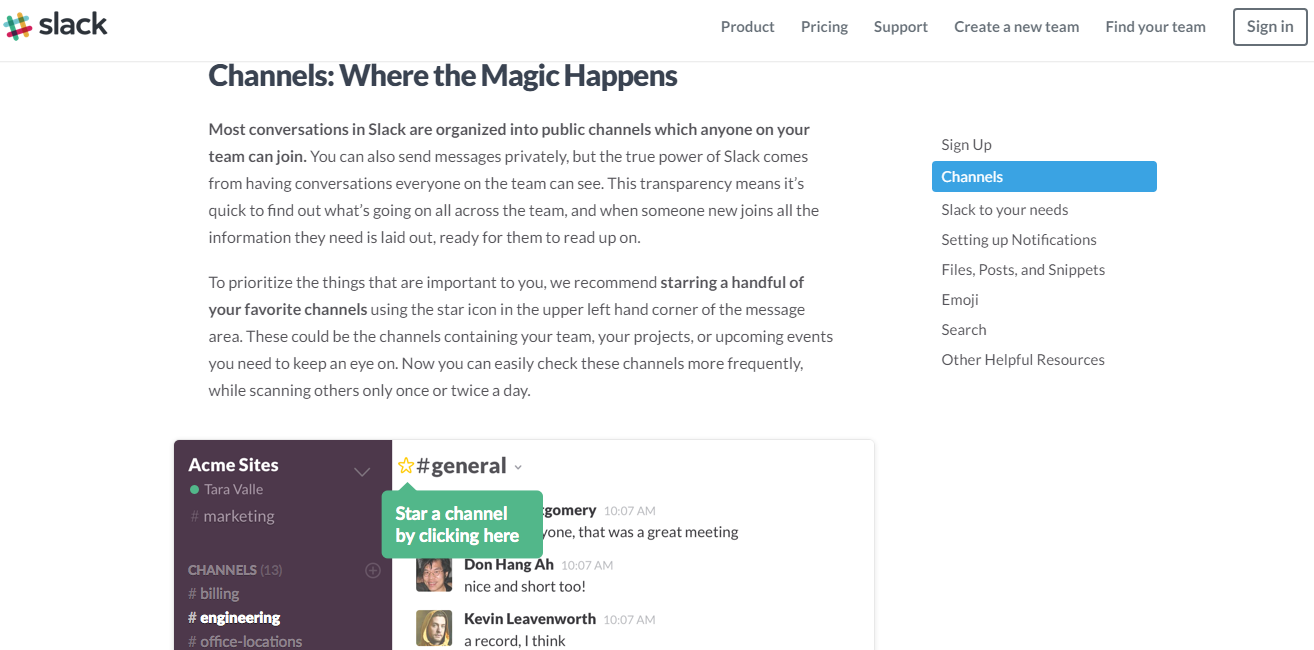
(Image Source: Slack)
We’ll also touch on Slack’s strategy as it relates to social media a little later on. Imagine the difference: if Slack adopted a more corporate, formal tone, how would you imagine that to affect its customer relationships?
Pick a personality that suits your mission and key demographics, and don’t be afraid to throw elements of your own personality into the mix. To be effective, it needs to be sincere.
Visuals
Finally, we get to visuals, which most people think of first when they think of a “brand.” Your visual elements should include far more than just your logo and your company’s color scheme, though those are also important elements to decide. For example, bright, vibrant colors could showcase a fun, energetic brand, while blacks, whites, and precision fonts could showcase a sleek, all-business brand; there’s a lot of wiggle room here.
There’s one major consideration to bear in mind for the SaaS industry, however; your product will live or die by its user experience, and customers know this. The visual layout of your software itself needs to be seamless, user friendly, and in line with the rest of your brand. Furthermore, your layout should be shown off every chance you get.
Take a look at how WorkDay shows off its software on the homepage:
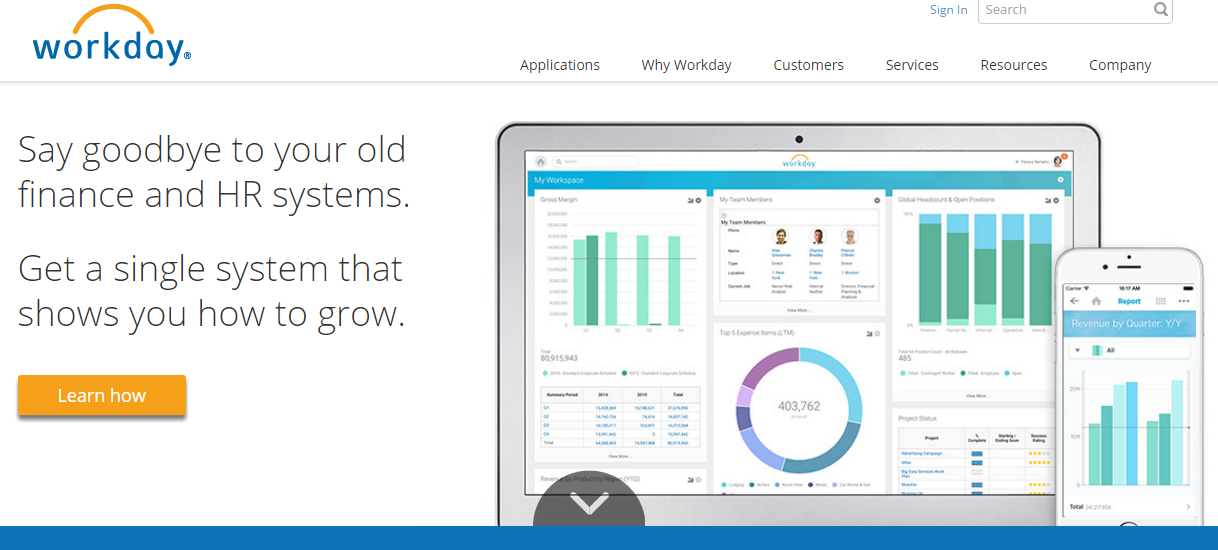
(Image Source: workday)
Imagine the difference: what if WorkDay didn’t display any visual features of its software except on the Demo page. You’d feel a little lost, right? Also imagine what the brand experience would be like if it were less colorful, on a black background, with a more formalized font—not necessarily bad, but certainly different. Carefully consider how your visuals communicate your brand’s nature.
Key Challenges
Now that I’ve addressed all the individual elements that should make up a SaaS brand, I want to move on to some of the biggest challenges SaaS brands face during development. You can either address these head-on, one by one, or simply keep them in mind as you develop your brand across different areas, but either way, you can’t afford to neglect them.
- Subscription services are long-term investments. Your customers need to know that they can trust you. How can you demonstrate and build this trust within your brand standards? For example, should you let your customers do the talking for you in a distant, yet logical appeal? Should you mention your past, current, and future goals in your vision? Should you aim for a super-friendly, casual voice to make your business more approachable? There’s no one right answer, but trust is imperative.
- It bears repeating; don’t just copy another SaaS company’s brand. If your company looks like another that already exists, customers are going to go with the one they heard of first. You have to differentiate yourself in a meaningful way. Does that mean creating compelling new visuals? Offering a bolder mission statement? Doing more to serve the community? The angle is up to you.
- Return on Investment (ROI). Most SaaS companies are B2B, meaning your customers will be making most of their decisions based on a financial bottom line. How is your service going to save them money (or time)? You need to demonstrate this clearly in your messaging.
- You won’t be there in person to negotiate a deal or answer questions your potential customers have. You can offer a price point and an assurance that your software can do “X, Y, and Z,” but what proof does your brand have? What promises are you making, and how are you backing those promises? Customer reviews, testimonials, guarantees, and ongoing customer relationships are all enormous tools to improve your brand potential.
- The sales cycle for SaaS companies is incredibly short, especially when compared to other B2B ventures. Customers often make a decision based on first impressions, or at most after a few days of research. Your brand can’t just be good; it has to be good, and communicable in the span of mere moments. How can you reduce everything your brand is to a single image? A single message? A single webpage?
- Finally, you have to be consistent across all your platforms, which is tricky for a SaaS company. Your engineers, marketers, social managers, and customer support team all need to be in line with the same voice. In fact, your brand should be a reflection of your internal company culture—but that’s a topic for another day.
Exercises for SaaS Brand Development
With those considerations and challenges in mind, you should have a rough idea of what you want your brand (or new brand) to be. This outline is far from perfect, and you might have a good idea of the “feel” of your brand in your head, but great difficulty putting it into words. This is the challenge of branding; it isn’t numerical or tangible, so it’s notoriously tough to pin down. However, these exercises can help you quantify, polish, and elaborate on your brand.
The Different Hats Method
One of the best ways to find out which traits fit your brand is to find out which traits don’t fit your brand. Start out by making a change in one key area and listing the differences it would have for your user experience. For example, let’s say you want your brand to have a casual, informal voice. What if you started using corporate jargon and longer, more formally structured sentences? How might your customers react? Let’s say one element of your UVP is the provision immediate customer service. What if you replaced this with a robust, interactive self-help portal in your app?
This test has a few different benefits:
- You’ll gain a stronger understanding of your chosen qualities’ effects, and you can tweak them accordingly.
- You’ll force yourself to verbalize and distinguish your core brand qualities, which you can then publish when your work is complete.
- You might discover an angle that resonates even stronger with your target audience (at least conceptually).
The Personality Test
Instead of describing your brand objectively, imagine your brand as a person. This is a test that helps you “get to know” your brand better, and will help you find and use a suitable voice for it. What type of person is this? What is their age and sex? Where do they live? What do they do for fun? What are their passions? How do they talk to you? How do they dress? Don’t be afraid to ask the silly questions; all of them can help you better understand your brand.
The Essence Experiment
The essence experiment is an exercise in minimalism. It will help you cut out the white noise of your branding strategy and zero in on the priorities that matter. First, describe the “essence” of your brand in a single word. No cheating; make a list of different one-word responses that could characterize your brand if you have to, but ultimately, you need to settle on one. This is your “master” word, the essence of your company, and it should permeate every application of your brand. Then, do this for each aspect of your company—for example, summarize your mission in one word (e.g., “efficiency,” “adaptability,” “unburdening.”) Summarize your UVP in one word (e.g., “care,” “universality,” “speed.”), and so on.
Key Applications
Once your brand is established, there’s no shortage of potential applications for you to harness it.
Web Design
Your home page is going to make your users’ first impressions, so show everything there is to know about your brand in the smallest possible space. Try to use as few words as possible to concisely describe your idea, and use your design scheme to give users a “feel” that matches your brand personality. You can expand on individual elements of your brand on your internal pages.
Advertising
The core of your ads should be your brand image, voice, and personality. Without this, users won’t be able to connect your message to your company, and they certainly won’t be able to remember you. Again, minimalism and conciseness are your friends; use the results of your “essence” experiment above to help you come up with targeted messages that demonstrate your brand accurately, and don’t forget to tailor your message to your audience.
Content Marketing
Content is your opportunity to “put your money where your mouth is,” so to speak. Let’s say your mission is to help users improve their social media campaigns; what are you doing to help them beyond the services your product offers? Sprout Social offers a resource library for such a purpose, complete in their signature brand voice:
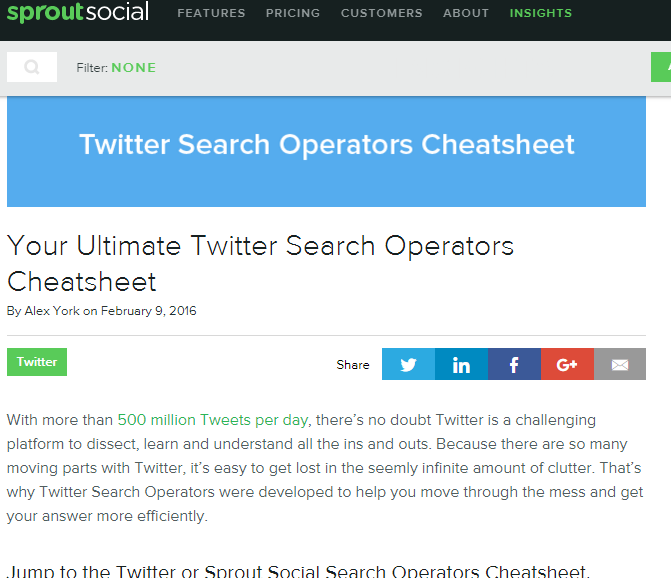
(Image Source: Sprout Social)
There’s no right or wrong way to use content, but it must be in line with your brand values, and demonstrate your authority in your niche. Even if you use different authors, all your work must remain consistent in your brand voice; otherwise, your users will have an inconsistent experience and be less likely to return.
Social Media Marketing
For SaaS companies, social media serves many purposes; it’s a sales tool, a mechanism for social proof, and can even be used as a customer service platform. However, if you want to be effective, you need to use a consistent brand voice throughout your posts, and adhere to your selected brand values. Take a look at how Slack manages to maintain it’s casual, almost-snarky brand voice on its Twitter account:
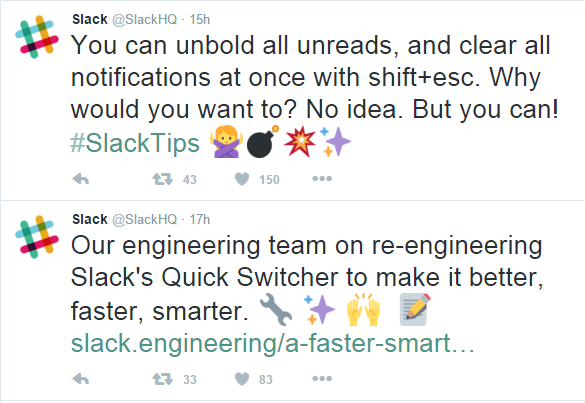
Help and Tutorials
Your help and tutorials sections are what will keep your users around and using your software—especially if they end up having issues. But it also speaks volumes about your commitment to customer satisfaction from a newcomer’s perspective. Think of this as an additional wing of your content strategy, and prove both your expertise and your prioritization of customer experience. It goes a long way to establish trust, especially early on.
Conclusion
When it comes to a brand, consistency is one of your best tools for success; keep your branding consistent across all your platforms, and you should have no problem building a loyal audience. However, don’t mistake consistency for immovability—your brand is a living, breathing creation, and should evolve as you learn more information about your customers and grow your company in new directions. Keep the core elements, the essence, of your brand close to your original vision, but don’t be afraid to gradually branch out with new approaches and new applications.
The SaaS niche offers some major business development advantages, but these are accompanied by unique challenges that every SaaS marketer faces. If you can make your brand stand out, prove your value to prospective subscribers, personify your brand into a more approachable form, retain your customers for as long as possible, and overcome the initial momentum hurdles, you’ll be well on your way to a long-term sustainable customer base and a profitable model. The better you know your audience, the more likely you are to succeed in every area, so back your decisions with research, and remain committed to your ultimate goals.
There are a number of strategies I haven’t mentioned that can be valuable for SaaS companies, including email marketing and affiliate marketing, but the ones I outlined above are bigger and more important as overall constructs. Together, content marketing, SEO, and social media form a powerful, interrelated, complementary package of marketing tactics that provide the best long-term returns in both customer acquisition and customer retention. And while paid advertising often yields a positive ROI, it pales in comparison to inbound strategies when looking at the long term.
Want more information on content marketing? Head over to our comprehensive guide on content marketing here: The All-in-One Guide to Planning and Launching a Content Marketing Strategy.
More Posts



















Report This Post
Please complete the following requested information to flag this post and report abuse, or offensive content. Your report will be reviewed within 24 hours. We will take appropriate action as described in Findit terms of use.



Oh my goodness! a wonderful post dude. Many thanks Bandar Slot Gacor|Bandar Slot Terbaik|Slot Depo OVO|Slot Uang Asli|Slot Menang Banyak |
I love this blog. I don't know what I'd do without you and your great info! Thank you so much!Slot Gampang Jackpot|Slot Online Terbaik|Judi Slot Indonesia|Slot Gacor|Online Slot Terbesar |